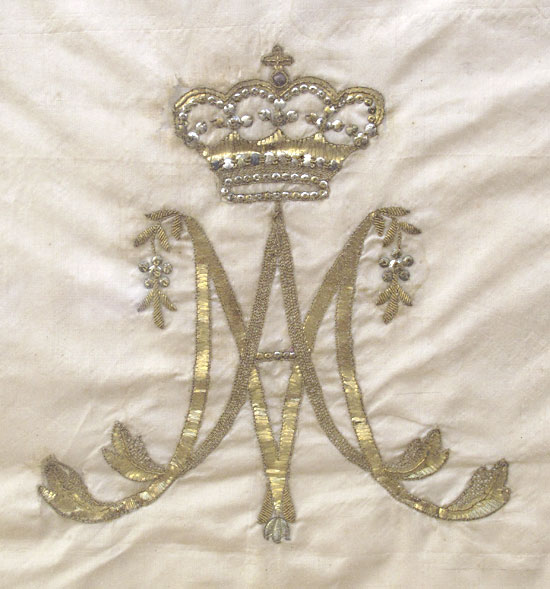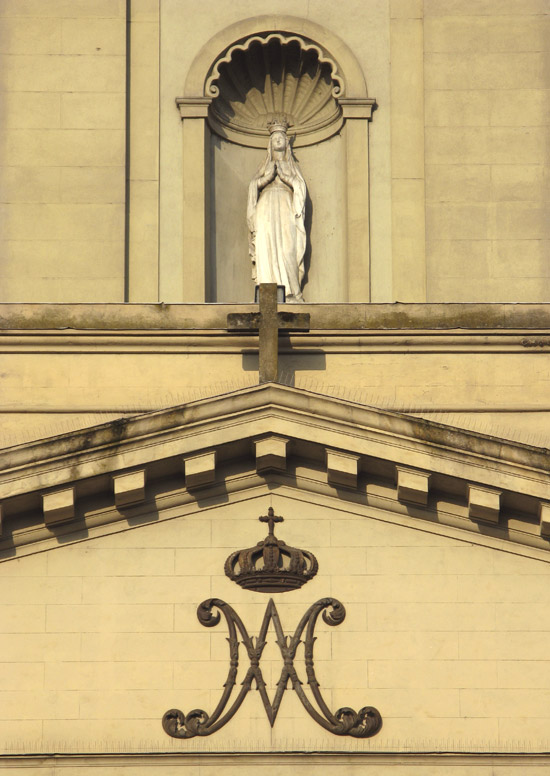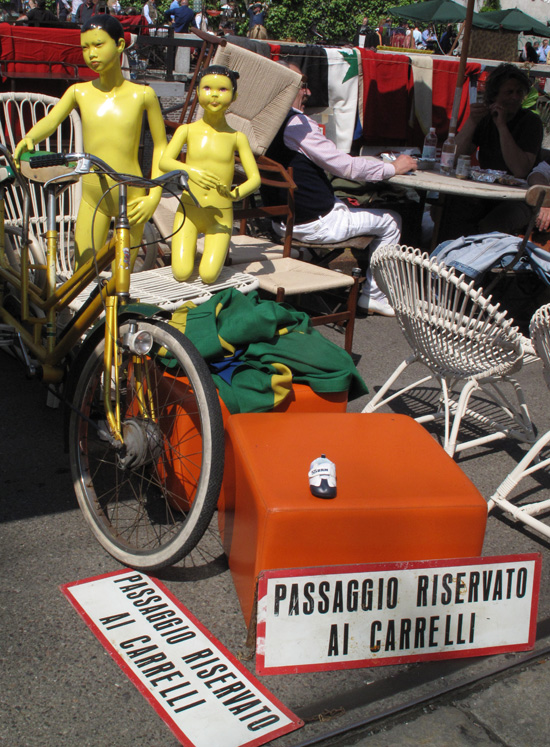
by Maureen | Apr 26, 2010 | Canals, Discoveries, Featured Articles, Journal, People, Photo of the Day, Photos, Shopping & Markets
On the last Sunday of the month, one can browse Antiques and Flea-Market-Finds for as far as the eye can see (2 kilometers), on both sides of the Naviglio Grande, the Grand Canal. (This canal intersects with the Naviglio Pavese, the one I ride my bike along.)
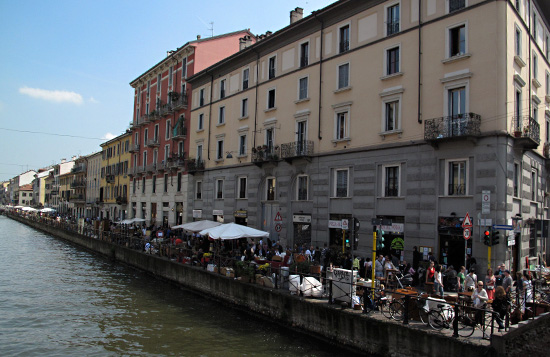
.
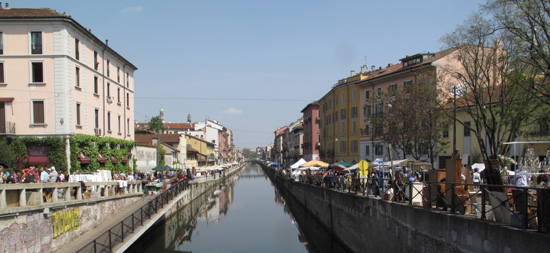
.

There is still some limited boat traffic along the canal when they’ve let the water in.
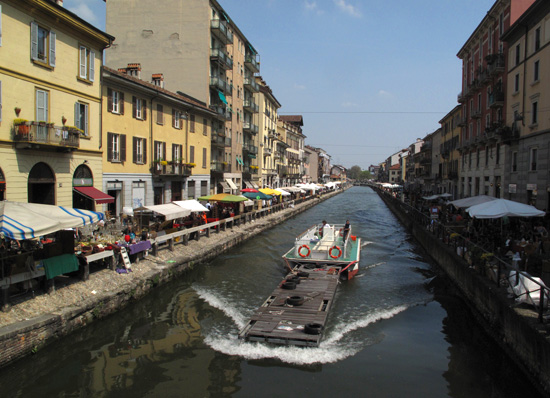
The antique sellers’ stalls also stretch far out into the side streets that branch off of the canal.
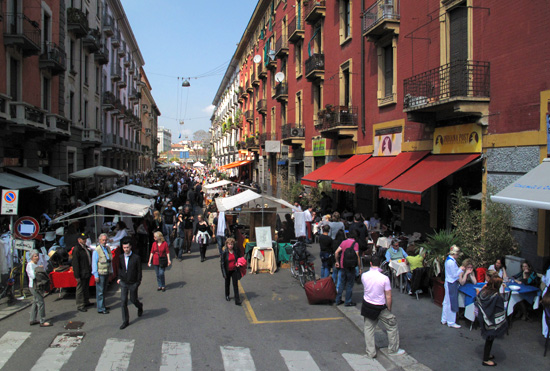
Linens? Oh yes. I find plenty. And they’re gorgeous. And the sellers know what they have and charge prices accordingly. There are few, if any, “steals” here. But the high quality linen and cotton, with the embroidery and open-work stitching, are superb examples of the old European linens. (I would love to buy them all up… but for what?)
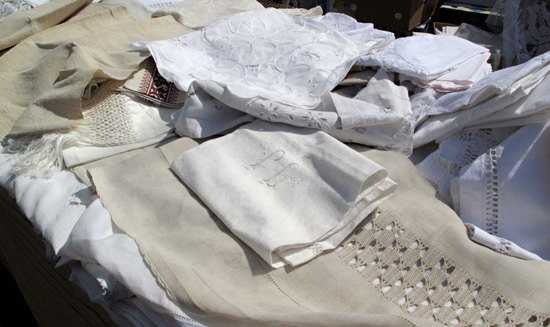
.
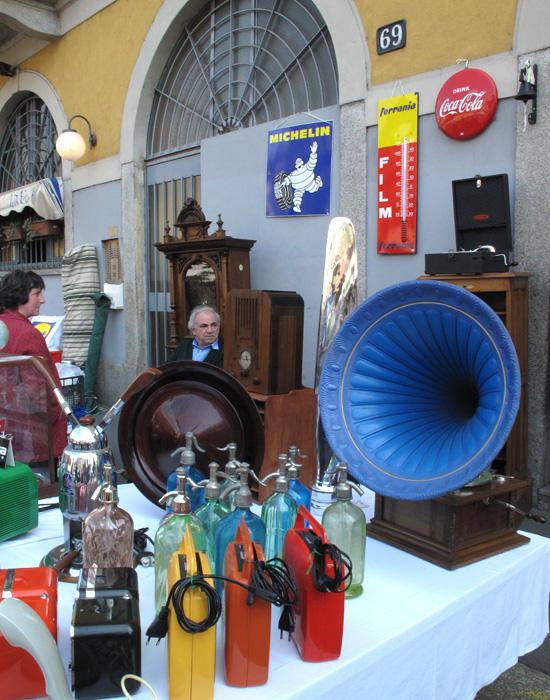
.
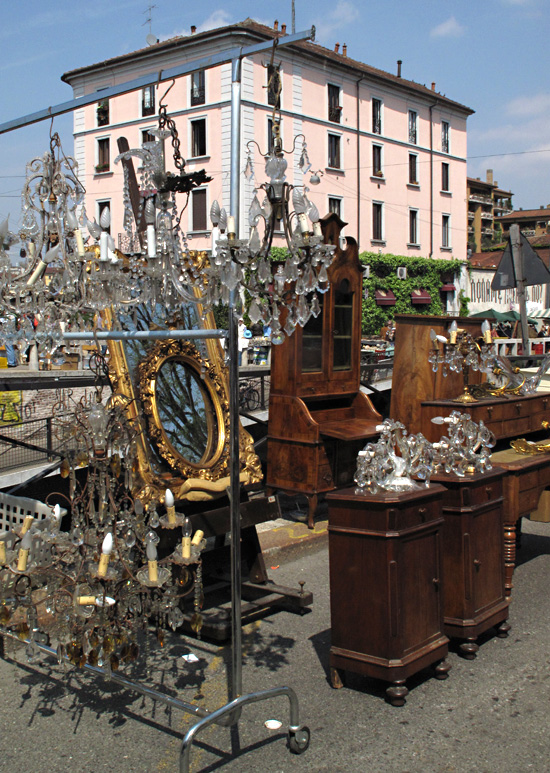
.
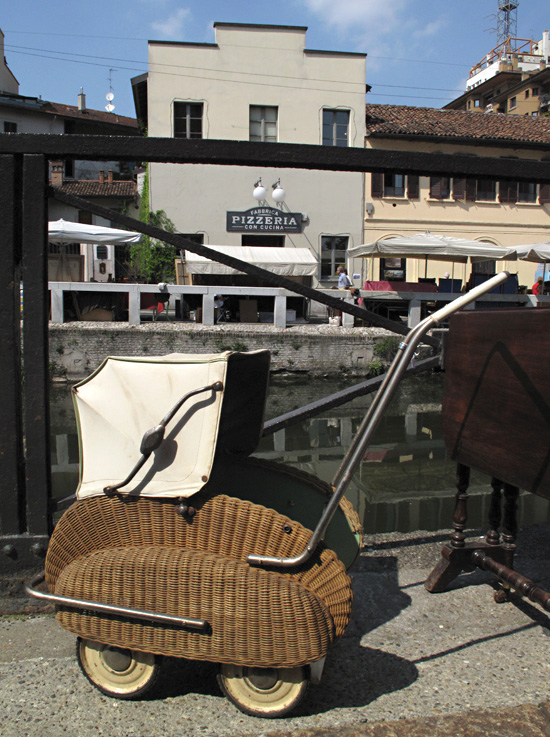
.
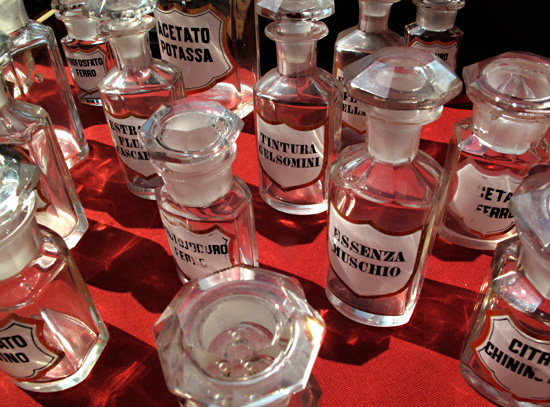
Beautiful, finely-crafted instruments of all sorts! The asking price of this Astrolabe was 700 Euro. (Cough, cough. Roughly $1000 right now.) But it was lovely.
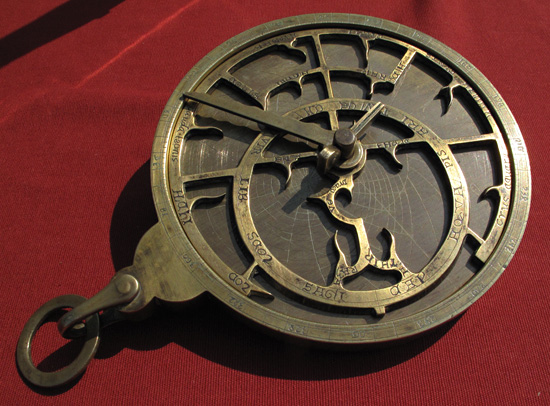
I don’t even know what this Parisian instrument is.
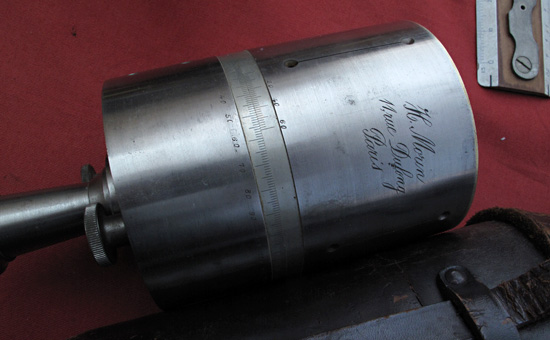
These look like porcelain portraits of Mao and his family.
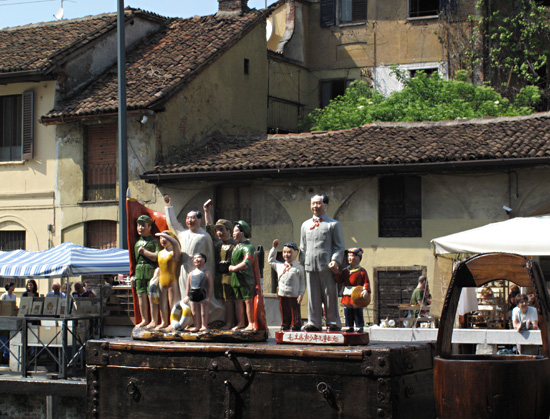
An interesting assortment of portraits.
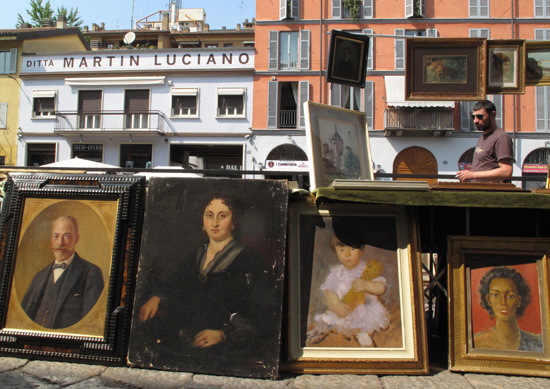
It is startling to me how often I see the American flag, or some representation of it.
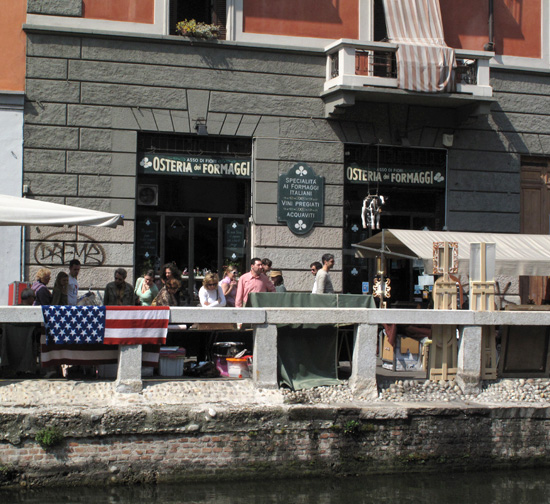
Isn’t this luggage out of the stereotypical “Italian Holiday Travel Movie”?
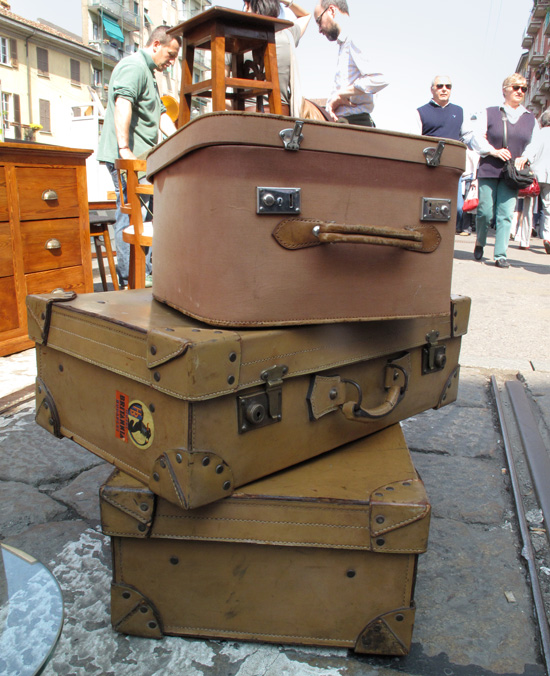
The dog matches the upholstery. I missed him at first.
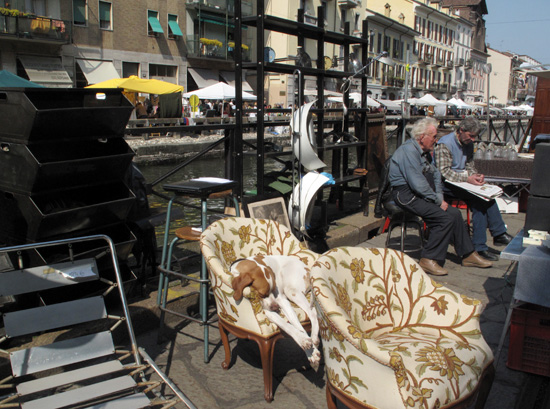
.
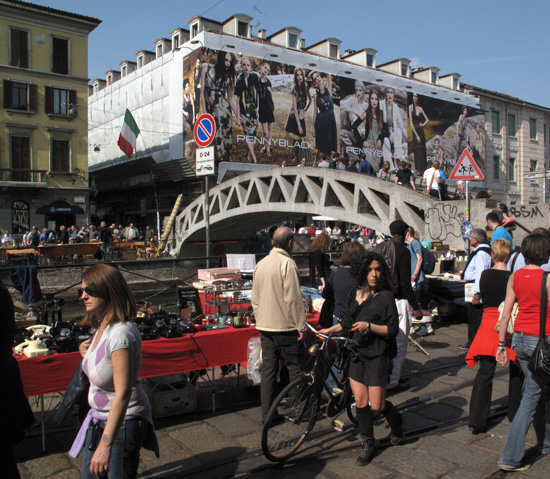
Smile. I’m on Candid Camera (for my Seester.)
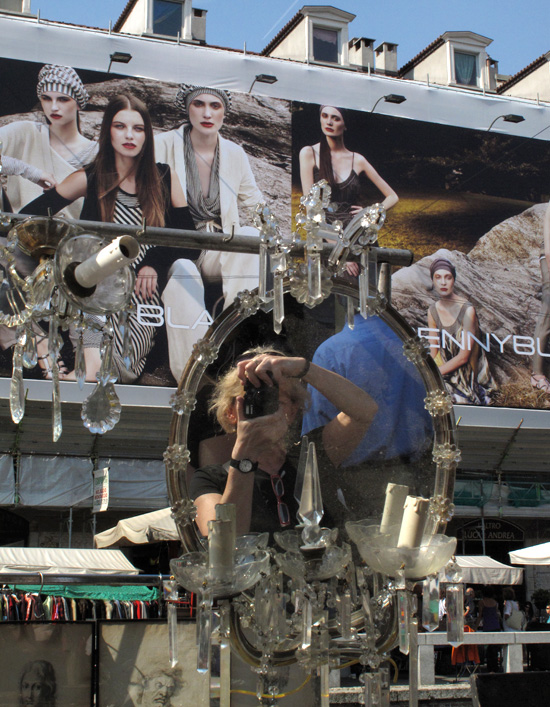
.
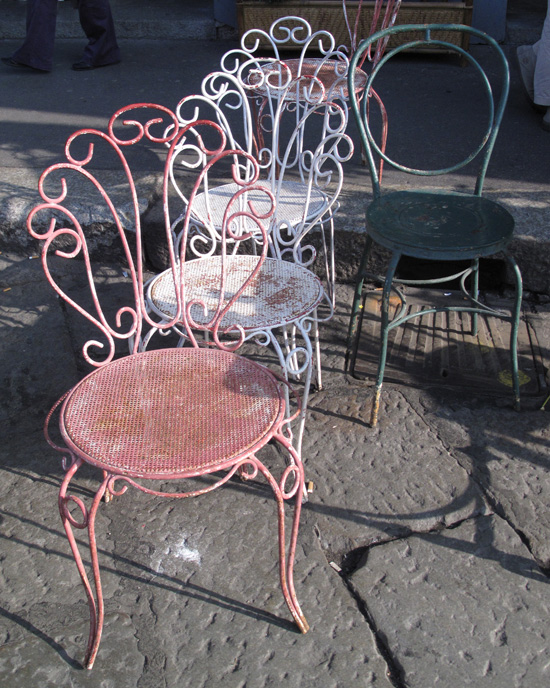
This guy sold horse figures of every sort.
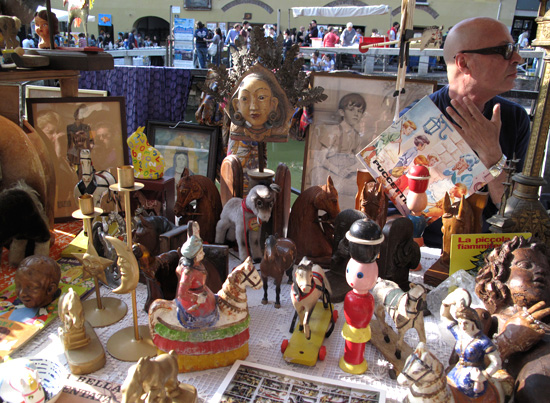
I had been walking around for hours and stumbled upon some finds. “How much for this group of papers and books?” “50 Euro.” “How about 40?” How about 45 and you let me buy you a drink.” I laughed. It caught me completely by surprise. I bought the papers and books for 45 Euro and Graziano and I stepped 10 feet across the cobblestone and had a glass of cold white wine at a Sushi Bar on a hot afternoon and talked for a little while. So funny. But it was a pleasant and charming break.
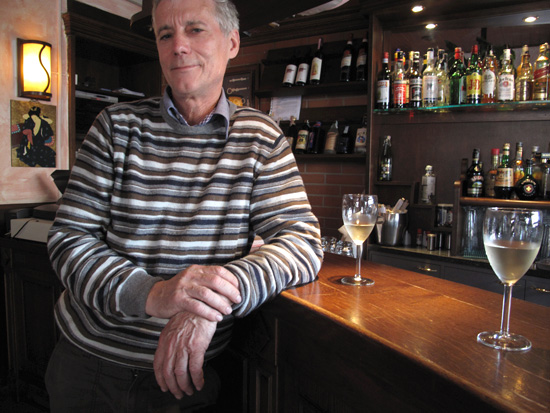
Cool hat box. (Cool typography.)
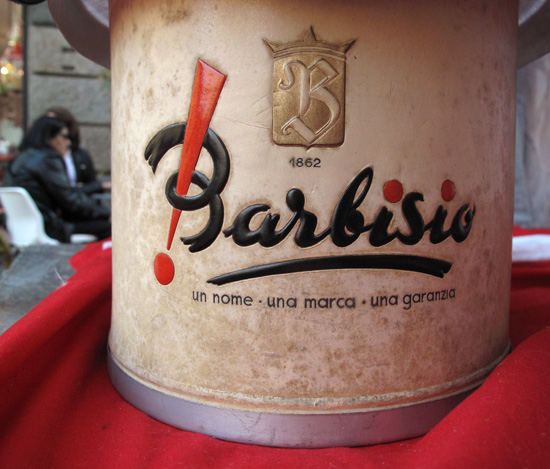
As the warm afternoon waned, the cafés started to fill with people enjoying the Milanese aperitivo. The musicians showed up in the old Vicolo dei Lavandai, the washing station of the 19th century where women gathered to scour their clothes against washboard stones as their wash water flowed off into the canal.
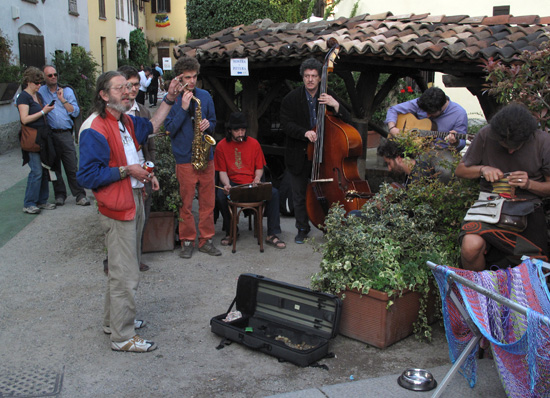
Who’da thought I’d see this?! Wait! I should have bought the one a few issues back: Settembre 1957!
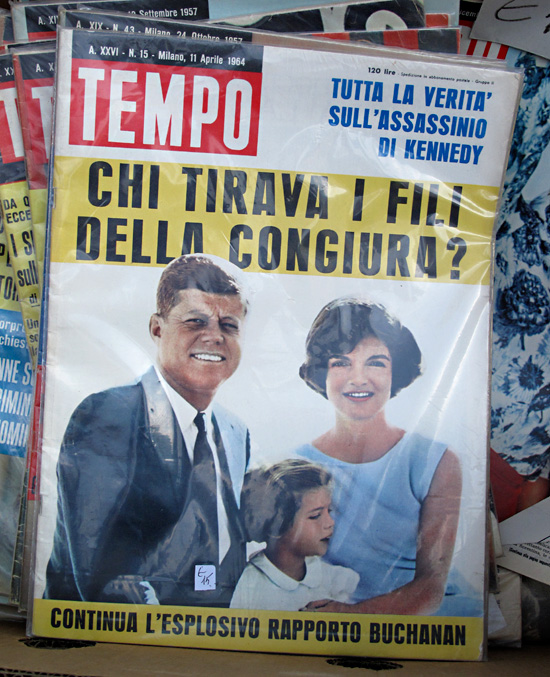
Packing up to go home, this man still wore hat, bow tie and white coat as he packed his lamps into a salami box.
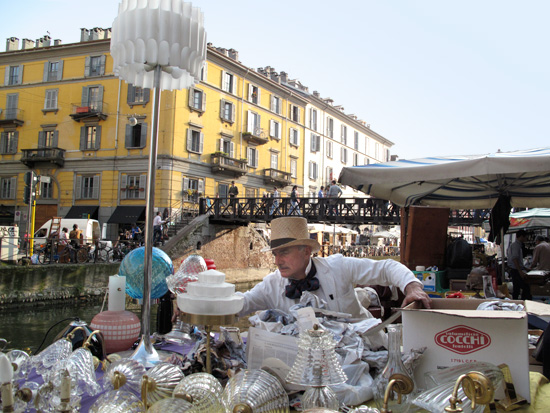
So now, do you have an idea of what’s for sale at an Italian Antique/Flea Market?
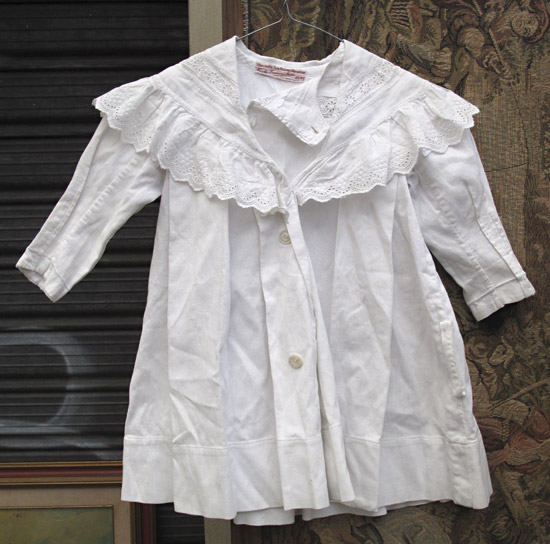
by Maureen | Mar 30, 2010 | Featured Articles, Firenze, Incredible Locations, Journal, Photos, Shopping & Markets
A month ago I was given a hot lead from a girlfriend in Seattle about flea markets in Firenze. What I uncovered through some digging was that the “hottest” market happens on the last Sunday of the month, in the Piazza dei Ciompi, just a few blocks’ walk east of the Piazza del Duomo. OK. That little fact determined the timing of my return visit to Firenze.
I even set the alarm Sunday morning(!), ate a quick breakfast and started walking the mile to the piazza. Along the way, I kept seeing people carrying branches and scratched my head over that. Hmm. Oh! It was Palm Sunday but they were carrying olive branches, not palms! I stepped into the Basilica della Santissima Annunziata mere moments before mass started and witnessed the procession of priests and parishioners.
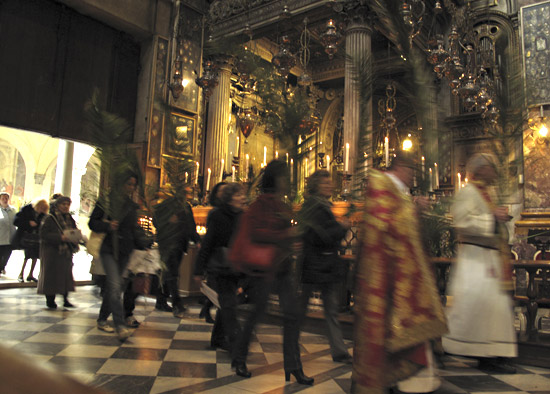
The portico between the church and the “cloister of the dead” offered a heaping bale of olive branches, so I plucked a few little twigs to carry in my pocket, then continued my mile walk.
When I arrived at the Piazza dei Ciompi, I found many of the things I expected AND I found most everything I was looking for. On the last Sunday of the month, the flea market spills out into the side streets, populated by many of the local antiques dealers surrounding the piazza. There are the vendors that know what they have and charge high prices accordingly. And there are those that have a mixed pile of junky tidbits with a “treasure” tucked in here and there. The concept must be universal among flea markets and swap meets.
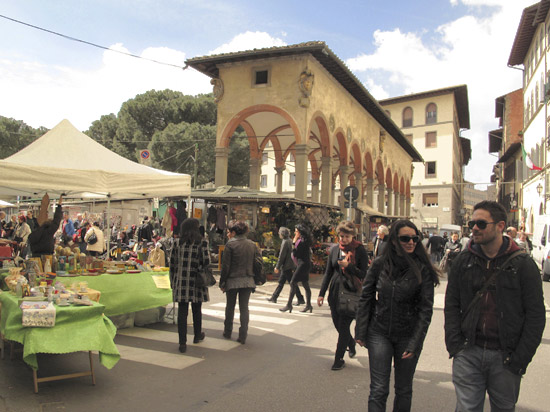
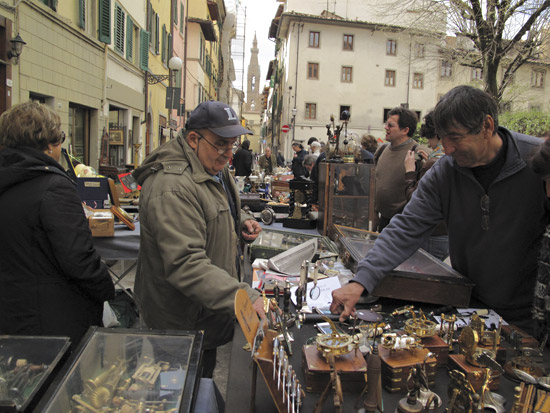
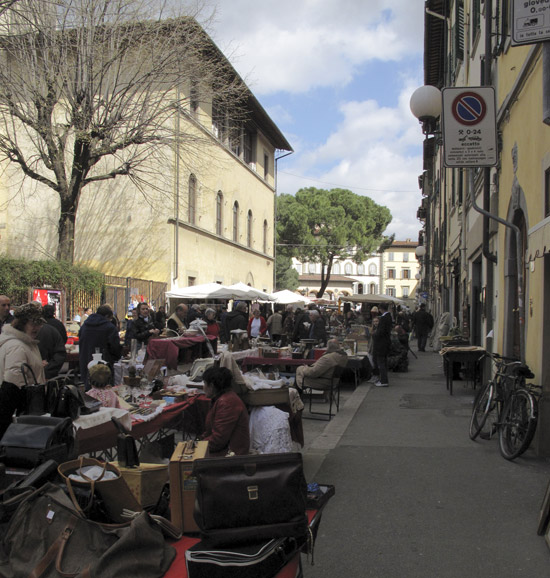
Of course there were iron pieces, linens, books, figurines, clothing, costume jewelry, housewares and miscellanea. What I went in search of were red-stitched linens (thinking of my great, great grandmother and Frette linens) and old penmanship guidebooks. I found both! What I didn’t find are the meat and milk signs like I’ve seen hanging outside markets around the country. I’d gladly hang them outside my door at home in Seattle!
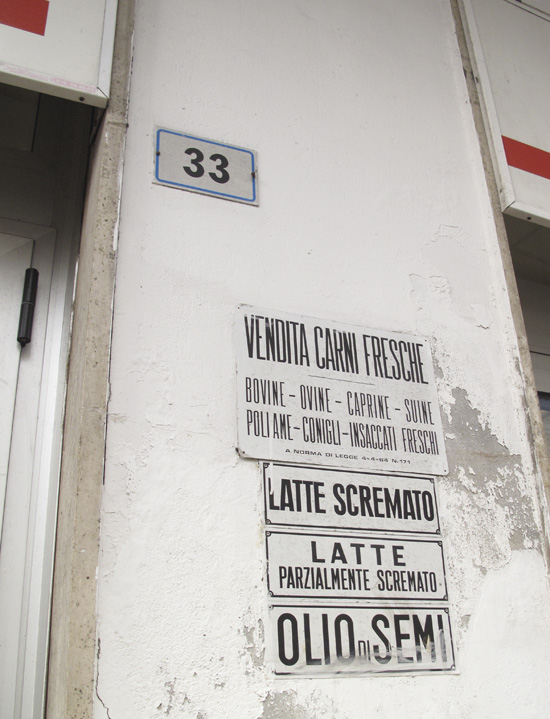
Look at these hat forms! The vendor had about a dozen of them. Many different hat shapes. Beautifully-sculpted hardwood! If I remember right, they were selling for about 80 euro each (about $107).
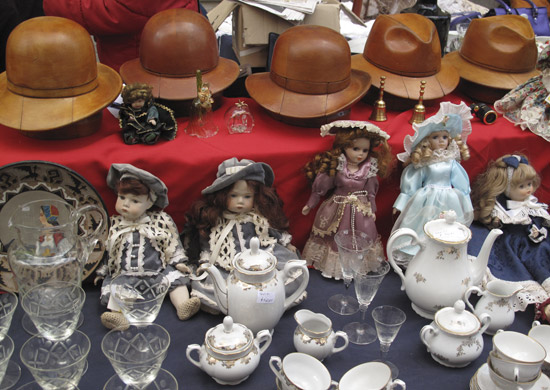
Years ago, both of my Grandmas let me paw through their button boxes and select my favorites. I now have a collection of thousands of buttons, especially mother-of-pearl. I dig into my collection when I’ve sewn something and need just-right buttons. When I saw these boxes full of buttons, I was hopeful, but in the end unwilling to pay 50 cents per pearl button.
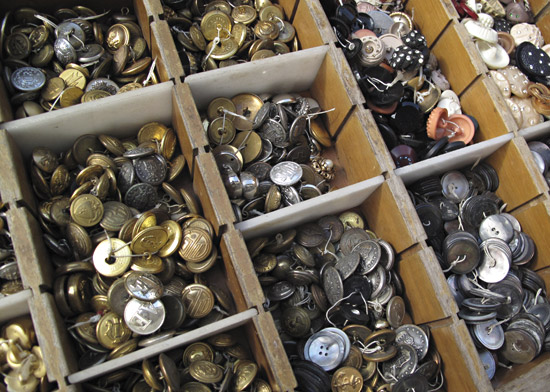
This lovely, white, cotton-with-eyelet dress from Roma was hanging toward the back of one seller’s stall. Darn. It wasn’t for sale. I would have brought it home to little 5-month-old Audrey, whom I haven’t even met yet (!)


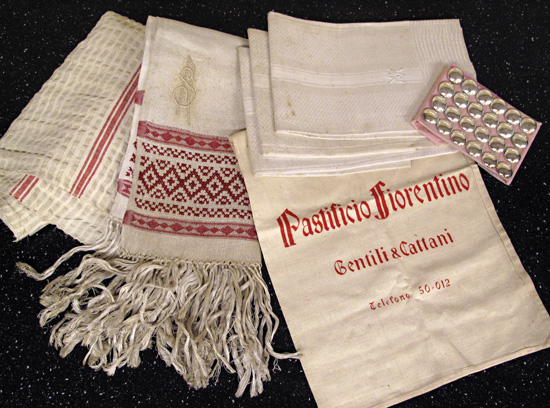
by Maureen | Mar 30, 2010 | Discoveries, Featured Articles, Firenze, Incredible Locations, Journal, Photos, Shopping & Markets
It was as a Camp Fire Girl in fifth grade that I learned to sew by stitching along the lines of binder paper. I’ve been sewing by machine and by hand ever since and fabric is one of the things that makes my heart rate pick up. (Literally.) So, put me in a place where I can find antique fabric, handwork and sewing “notions” and I think I’ve gone to heaven. I passed up some red-on-white cross-stitch samplers from the late 1800s either because they weren’t well-wrought, or the price was higher than I was willing to spring for. I did bring home this little bundle which I will wash up and actually use: embroidered hand towels and napkins, sterling buttons and a muslin flour sack. (I’m easily amused.)

Can you believe I found MY initials embroidered?!
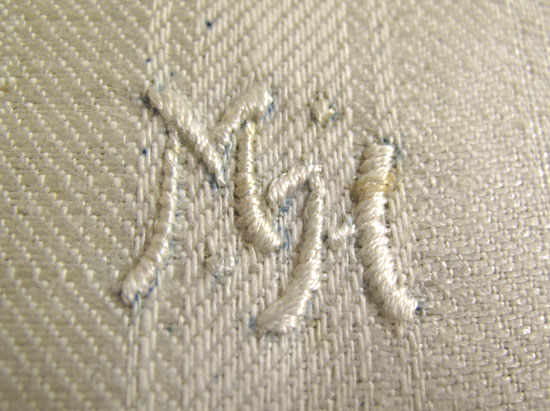
There was a box of about 10 dozen sterling silver buttons produced for Italian military uniforms. Each is marked with “Milano” on the back, which I think is more beautiful than the high-polish front. (I’ll take steel wool to the surface to rough them up, then use them on a special jacket I’ll make.)
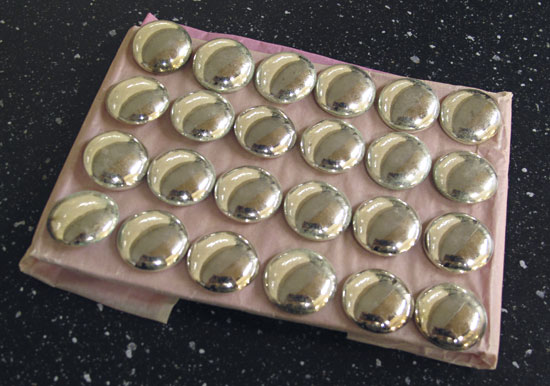
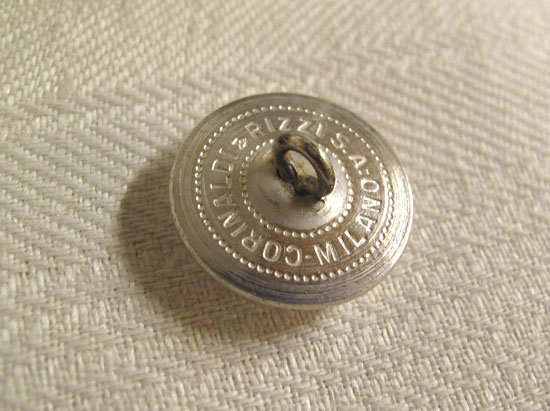
This is elaborate raised stitching on the damask, woven patten.
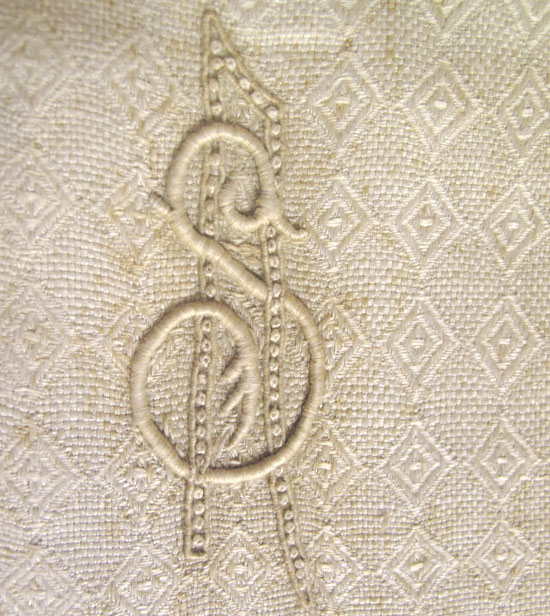
This fringed towel features hand-wrought, counted cross-stitch in between two woven borders.
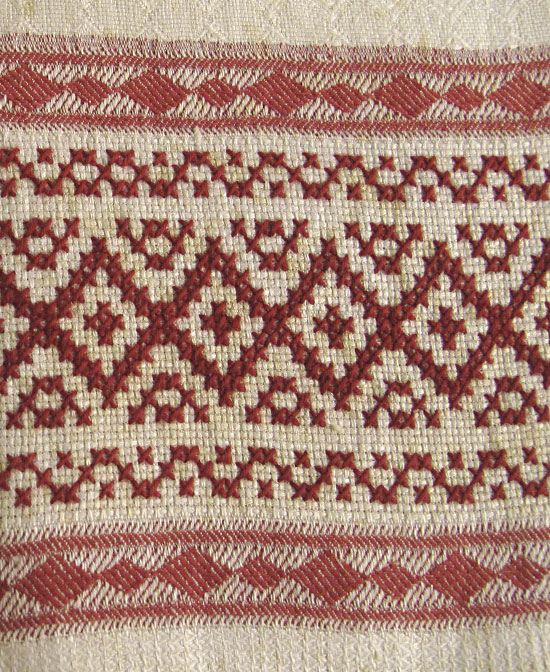
This was a sign on the door of a little shop where they do “polishing, lacquering, restoration and gilding” and sell antique furniture and frames. “Excuse me, would you be willing to sell your sign?”
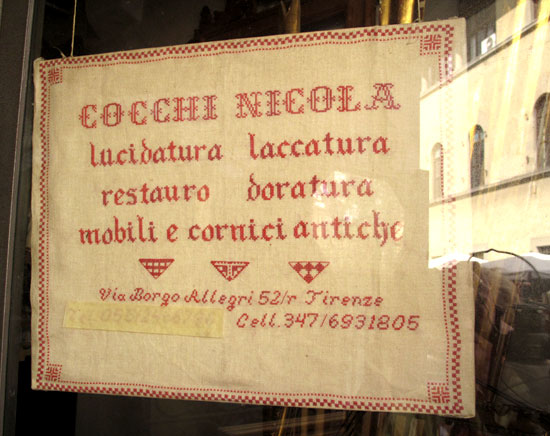
The sellers of this piece were out to lunch. I waited around but they didn’t return, so I simply photographed it. This is a religious symbol for Mary, Mother of God. The “AM” monogram stands for “Ave Maria”. I’ve seen this symbol other places in Italy, such as the cathedral in San Giovanni Valdarno when I was there 2 years ago.
